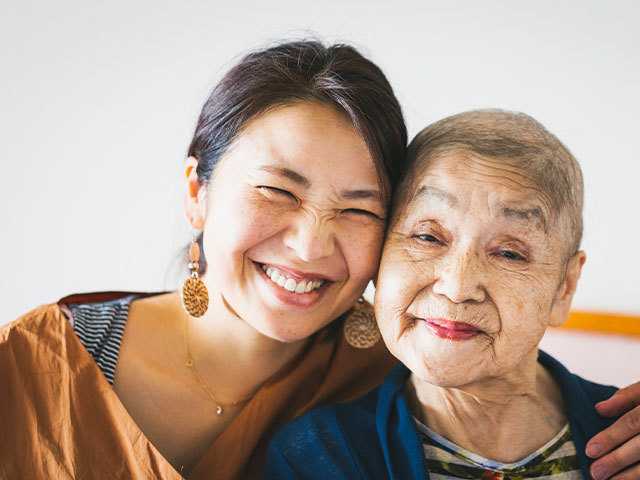Family and visitor guidelines.

The Corewell Health care team understands how important visitors are to support healing, comfort, care coordination and discharge planning for our patients. If you are planning to visit or accompany a patient to a Corewell Health facility, please review the information listed below (these guidelines do not included Helen DeVos Children’s Hospital):
- The number of people at the bedside is dependent on but not limited to the individual patient needs/circumstances, unit activity, available space, and maintaining a safe environment. There may be circumstances that require restrictions or special limitations. Please ask your care team if you have any questions.
- Adult emergency department: two visitors
- Visitors to COVID+ patients should follow PPE requirements
- Sick visitors to all patients are discouraged to visit
- In certain circumstances, sick visitors (including those with COVID) may be allowed:
- Women’s Services:
1) Up to 4 visitors/time at the bedside in Labor and Deliver
- An ill or COVID+ support person may remain with the laboring mother and infant
- Support person must always wear an isolation mask and must stay in the patient’s room
- Patient’s room will be put into Severe Respiratory Precautions
- Additional visitor restrictions may be enacted by leadership based on need during cohorting situations, etc.
Ensure you are a healthy visitor upon arrival.
Masks are optional for patients and visitors at all Corewell Health sites, except for at long-term care and skilled nursing facilities. Stations with free masks are available at entrances for all who choose to use them.
Visit between 6 am and 9 pm. All pediatric patients are allowed one adult visitor overnight. One adult visitor is permitted to stay overnight for all non-COVID-19 patients in private rooms.
We request that no more than two visitors are present at the patient’s bedside at a time.
Minor visitors—those ages 15 years and younger—are not permitted for COVID-19 patients. Visitors who are younger than 12 years old must have a supervising adult with them at all times who is not the patient.
Frequently asked questions

Health care organizations are expected to follow state and federal requirements/guidelines for masking and other COVID-19 protocols. In addition to Centers for Disease Control and Prevention recommendations, we also must consider guidance and requirements from the Centers for Medicare & Medicaid Services, The Joint Commission, the Michigan Department of Health and Human Services and the Michigan Occupational Safety and Health Administration, among others. We are continually reviewing regulations, standards and guidelines for potential modifications across our system. As we make changes to our guidelines, we will update our patient and visitor web page.

Virtual visits for hospitalized patients
If your loved one is hospitalized at Spectrum Health, virtual visits create a secure connection complying with health care privacy regulations, during your established visit time. Virtual visits, made possible through creative problem-solving and donated technology, have lifted the spirits of family members separated by illness during the COVID-19 pandemic. This option is offered to the patient’s identified emergency contact, shortly after a patient is admitted.
Additional communication resources
- We are always here to help. If you are unable to personally connect with your loved one or haven’t received an update from the care team, call 616.391.1774 anytime, 24/7.
- This guide offers tips to stay connected to loved ones and their caregivers while they are in the hospital.

We know this is difficult for everyone involved, and we want to be sure there are ways for you to stay connected with your loved ones. Many phones, tablets and computers have free and easy ways to communicate with your friends and family via video, voice or text. We encourage you to use digital resources to connect with your loved ones in the hospital and to assist them in their care. Below are free resources:
Text, phone, and video chats
FaceTime
FaceTime is a free app available on Apple devices (iPhone, iPad, iPod Touch or Mac/MacBook) that allows you to have video and audio calls with loved ones who also have Apple devices.
How-To:
- Instructions on how to download and use FaceTime on your iPhone, iPad or iPod Touch
- Instructions on how to download and use FaceTime on your Mac/MacBook
Skype
Skype is a free communications platform that allows you to connect with your loved ones via text chat, phone call or video call on your smartphone, tablet or computer.
How-To:
- Download Skype to your device
- Create a free account for Skype
- Sign in to Skype
Below are instructions on how to start a text chat, phone call or video call:
Google Hangouts
Hangouts is a free communication platform that allows you to connect with your loved ones via text chat, phone call or video call on your smartphone, tablet or computer. Hangouts can be accessed through Gmail, YouTube, the Hangouts app in the Apple or Android stores and on the web.
How-To:
Sign into your Google account. If you do not already have an account, you can create one here. Below are instructions on how to start a text chat, phone call or video call:
Zoom
Zoom is a video conferencing platform that allows you to connect with your loved ones via video or audio call on your smartphone, tablet or computer. There are both free and paid plans available.
How-To:
- Instructions on how to setup and use Zoom.

MyChart proxy access
MyChart is a free, secure portal that provides the most up-to-date medical information available about your or your loved one’s care. Parents, family members, legal representatives and other individuals may also obtain a MyChart account if they become authorized as a proxy to access a patient's medical record for approved purposes.


